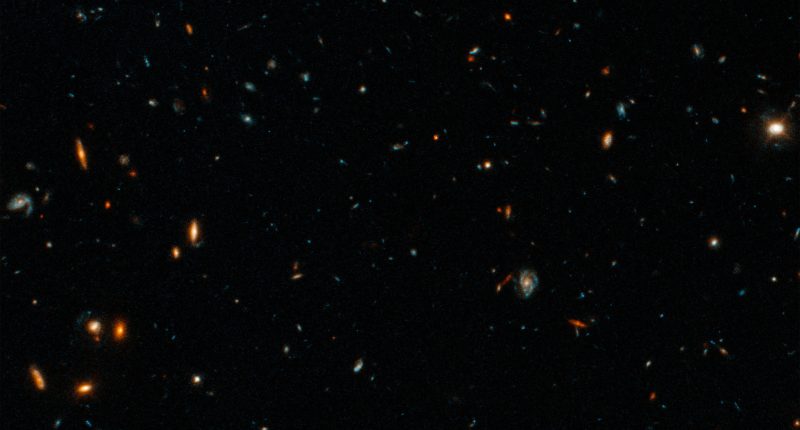ASTRONOMERS believe they have pinpointed the place of origin of a distant radio signal burst.
In 2022, researchers uncovered the most powerful fast radio burst (FRB) ever observed.
Designated FRB 20220610A, the space signal existed when the universe was only 5 billion years old.
FRBs are defined as a very intense, millisecond-long burst of radio waves that are produced by unidentified sources in deep space.
But now, astronomers think they’ve discovered where FRB 20220610A is coming from.
New research conducted by scientists from Northwestern University proposes that the FRB originates from a compact group of at least seven galaxies 7.886 billion light-years from Earth.
Surprisingly, the galaxies are in such proximity that they could all fit inside the Milky Way galaxy.
To come to this conclusion, the team of astronomers analyzed images from NASA’s Hubble Space Telescope.
“Without the Hubble’s imaging, it would still remain a mystery as to whether this FRB originated from one monolithic galaxy or from some type of interacting system,” said Northwestern’s Alexa Gordon, who led the study.
“It’s these types of environments—these weird ones—that drive us toward a better understanding of the mystery of FRBs.”
Most read in Tech
What’s more, it seems the seven galaxies are interacting with one another and might even merge one day.
“There are some signs that the group members are ‘interacting’,” said study co-author Wen-fai Fong, an associate professor of physics and astronomy.
“In other words, they could be trading materials or possibly on a path to merging,” Fong added.
“These groups of galaxies (called compact groups) are incredibly rare environments in the universe and are the densest galaxy-scale structures we know of.”
Gordon added it was this type of interaction that could potentially trigger bursts of star formation.
“That might indicate that the progenitor of FRB 20220610A is associated with a fairly recent population of stars which matches what we’ve learned from other FRBs,” she explained.
Initially, researchers believed the FRB originated from an unidentifiable, single blob-like galaxy.
“Despite hundreds of FRB events discovered to date, only a fraction of those have been pinpointed to their host galaxies,” said study co-author Yuxin (Vic) Dong.
“Within that small fraction, only a few came from a dense galactic environment, but none have ever been seen in such a compact group. So, its birthplace is truly rare,” Dong added.
READ MORE SUN STORIES
FRB 20220610A was first detected on June 10, 2022, by the Australian Square Kilometer Array Pathfinder (ASKAP) radio telescope in Western Australia.
Not long after, the European Southern Observatory’s Very Large Telescope in Chile confirmed that the FRB came from a distant place.










